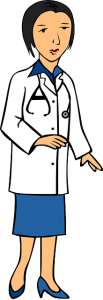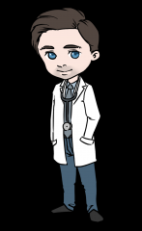
Do doctors make New Year’s resolution? We have already taken an oath to serve the patients and our community to the best of our ability. I will continue to be a lifelong learner, apart from that I have not made any new resolution for 2016. In this post I want to share 8 medical stories that touched my heart.

- Dr A was a compassionate paediatrician who lost her husband and her only child in a plane crash. She was devastated and had a mental breakdown. Soon she picked herself up and vowed to turn her life around after the tragedy. Now she is a renowned paediatrician and has dedicated her life to treating children. Whenever she feels sad, she looks at dozens of little sick children depending on her. Her profession healed her own pain.

- Dr B was a famous, charming physician and a skiing champion. He was engaged to get married to a gorgeous woman who was impressed by his outstanding skiing skills. He had a car accident and his legs were amputated. He was able to walk only with his prosthetic legs but needed a cane to support him . He didn’t want to be a burden to anyone. He left his city and handed over his established medical practice to a friend. He started working in a remote hospital in a small town. He saved lives of many poor patients. His fiancée traced him to the little town and confessed that she loved him, not his skiing skills. They got married and lived happily ever after in the little town. Sometimes they look at the skiing photographs and laugh together.

- Dr C was a dedicated surgeon who was often on call in the night to perform emergency operations. She was successful in every operation at a young age. Her lifelong mentor and teacher instructed her to operate on a very complicated case. It was a lost case, but she made a desperate attempt to save the patient. Her mentor wanted to teach her an important lesson. He explained to her that however hard a doctor can try, some patients cannot be saved. The man she loved had terminal cancer and her husband committed suicide because he did not trust her. Once again her chosen profession saved her from mental breakdown. Her mentor trained her to be an expert surgeon. She got a national award for lifelong dedication to her work. She dedicated the rest of her life to her profession.

- Dr D was a renowned gynaecologist and delivered hundreds of healthy babies. He was particularly well-known for competently handling complicated gynaecological cases. His wife was pregnant. He was doing the follow up. There were signs of complications and he was concerned. He was attending a complicating, emergency case. His wife suddenly started having severe premature labour pain. Her husband could not be reached in the operation theatre. By the time he successfully saved the life of a mother and child, his own wife and child had died.

- Dr E was a bubbly, cheerful haematologist. She often felt tired at work, sometimes had mild fever and headache. Doctors are bad patients. She ignored the ominous symptoms. Later she casually examined her blood sample and was shocked at the findings of her own blood smear. She had acute lymphocytic leukemia. It is also known as acute lymphoblastic leukaemia, which commonly occurs in children. She was particularly surprised because it is very rare in adults. Later bone marrow biopsy confirmed the diagnosis. There was complete remission within 5 weeks of starting treatment. Now she is writing a book and spending more time with her family.

- Dr F was a pathologist who was rushing to his lab and his car collided with another car. Both his arms were bruised and blood was oozing from multiple ulcerated areas. He did not take sick leave. After preliminary treatment he went back to his lab and reported all the pending urgent cases. Other doctors were on vacation.


- Dr G was a honest and sacrificing doctor. He was an orphan and was brought up by a wealthy family who treated him like their own son Dr H. A time comes when Dr G is in a situation where he had to give up his love and profession for the family who gave him so much in life.
Dr G and Dr H loved each other like real brothers.
Dr H married the girl Dr G secretly loved. Dr H started medical practice and charged exorbitant amount of money from patients, especially to do illegal abortions. Dr G tried to stop him but Dr H did not listen to him. One day a patient died during illegal abortion and Dr H was arrested. Dr G tells the police that he was the real culprit and changed all the hospital records to prove his point. In jail Dr G requested Dr H and his beloved wife to use medical profession to serve people, not to earn money. They kept the promise and started working in a small primary health centre in a remote village. Dr G was released from jail after 9 years. His foster brother Dr H and his wife were waiting for him, with their little child.

- Dr I was a honest and committed oncologist. He met a patient suffering from malignant tumour of the bowel. Doctor was charmed by the charismatic patient at the first meeting. The patient knew about the seriousness of the condition. He wanted to live life to the fullest before the inevitable occurred. He touched the lives of everyone he met. He brought happiness, laughter and joy in the personal life of the serious doctor. Finally he dies laughing. The doctor broke down and cried for the patient who became his dearest friend. Dr I wrote a book from his own diary about his amazing friend and made him immortal.
“In the end, it’s not the years in your life that count. It’s the life in your years. Abraham Lincoln
Happy 2016 to all my readers.












 “Science comes by observation, not by authority” Leonardo Da Vinci
“Science comes by observation, not by authority” Leonardo Da Vinci











